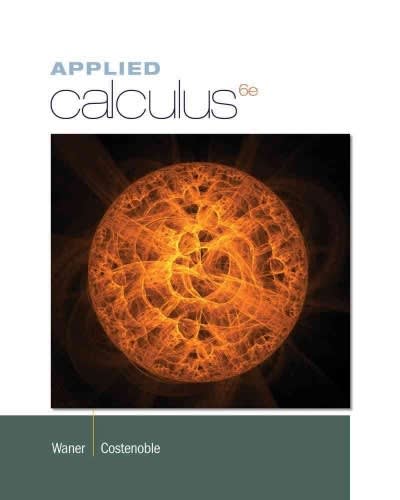Question
MAT 152 MCGINNIS Chapter 5 Lab Name: ____________________________________ Answer the following questions. Write the probabilities as a decimal (three significant digits). Show supporting work for
MAT 152 MCGINNIS
Chapter 5 Lab
Name: ____________________________________
Answer the following questions. Write the probabilities as a decimal (three significant digits). Show supporting work for full credit.
- In a standard 52 deck of cards, you get to pick one (1) card.
- What is the probability that you pick a heart or a two (2)?
2. What is the probability that you pick a three (3) or a four (4)?
3. What is the probability that you pick a Queen of Hearts or a Jack of Diamonds?
4. What is the probability that you pick a face card or a card less than an eight (8) (assume that an ace is considered a low card)?
5. Three cards a drawn from a standard 52-card deck. Determine the given probabilities.
a. P(Jack and Queen and Jack, in that order without replacement)
b. P(Club and Club and Club, in that order with replacement)
c. P(Four (4) and Three (3) and Two (2), in that order without replacement)
d. Suppose you flip a coin and roll a die. What is the probability that you get tails and a four (4)?
6. Suppose you flip a coin six (6) times. What is the probability that all flips are heads?
7. Suppose you flip a coin six (6) times. What is the probability that you get at least one (1) tails?
8. When rolling a pair of dice and looking at the sum, what is the probability that you don't roll a seven (7)?
9. What rolling a pair of dice and looking at the sum, what is the probability that you roll at least a three (3)?
10. Suppose that a single six-sided die is rolled.
a. What is the probability that the die comes up a four (4)?
11. Now suppose that the die is rolled again and you are told the outcome is an even number. What is the probability that the die comes up a four (4)?
12. Now, suppose that the die is rolled again, and you are told the outcome is an odd number. What is the probability that the die comes up a four (4)?
13. Suppose we have a bag containing 10 marbles. Six (6) of the marbles are red and four (4) are blue. (Assume that we do NOT replace the marbles)
a. If we randomly select two (2) marbles, what is the probability that both are red?
b. If we randomly select two (2) marbles, what is the probability that the first marble is red and the second marble is blue?
c. If we randomly select two (2) marbles, what is the probability that exactly one is red?
d. What is the probability that at least one (1) is blue?
14. You have a cooler that has 12 drink cans. Eight (8) cans are Mountain Dew and four (4) cans are Pepsi. They are all mixed together in the cooler and you can only see the tops so you don't know which are Mountain Dew and which are Pepsi. You want to get drinks for three (3) of your friends so you reach in and grab three (3) cans without looking.
a. What is the probability that all three (3) drinks are Pepsi?
b. What is the probability that all three drinks (3) are Mountain Dew?
c. What is the probability that at least one (1) drink is Pepsi?
d. What is the probability that at least one (1) drink is Mountain Dew?
15. In the judicial case United States versus City of Chicago, the attorneys for the US charged that the city of Chicago was discriminating again minorities in the qualifying exam that they were administering to Fire Captain Applicants. In the table below, Group A is a minority group and Group B is a majority group.
| Pass | Fail | Total | |
| Group A (minority group) | 10 | 14 | |
| Group B (majority group) | 417 | 145 | |
| Total |
a. If one of the test subjects is selected at random, determine the probability that a person who successfully passed the test would be selected.
b. If one of the test subjects is selected at random, determine the probability that a person from Group B or a person who successfully passed the test would be selected.
c. If two different test subject are selected at random, determine the probability that they would both be from Group A.
c. If two different test subjects are selected at random, determine the probability that the first would be a person who successfully passed the test and the second would be a person who failed the test.
e. If one of the test subjects is selected at random, determine the probability that a person who failed the test would be selected given that you know the subject is a person who is a member of Group B.
f. If one of the test subjects is selected at random, determine the probability that a person who failed the test would be selected given that you know the subject is a person who is a member of Group A.
g. If one of the test subject is selected at random, determine that probability that a person who failed the test would be selected.
h. If these were actual data from the case, do you think the US had a valid case against the City of Chicago? Justify your answer.
Step by Step Solution
There are 3 Steps involved in it
Step: 1

Get Instant Access to Expert-Tailored Solutions
See step-by-step solutions with expert insights and AI powered tools for academic success
Step: 2

Step: 3

Ace Your Homework with AI
Get the answers you need in no time with our AI-driven, step-by-step assistance
Get Started


